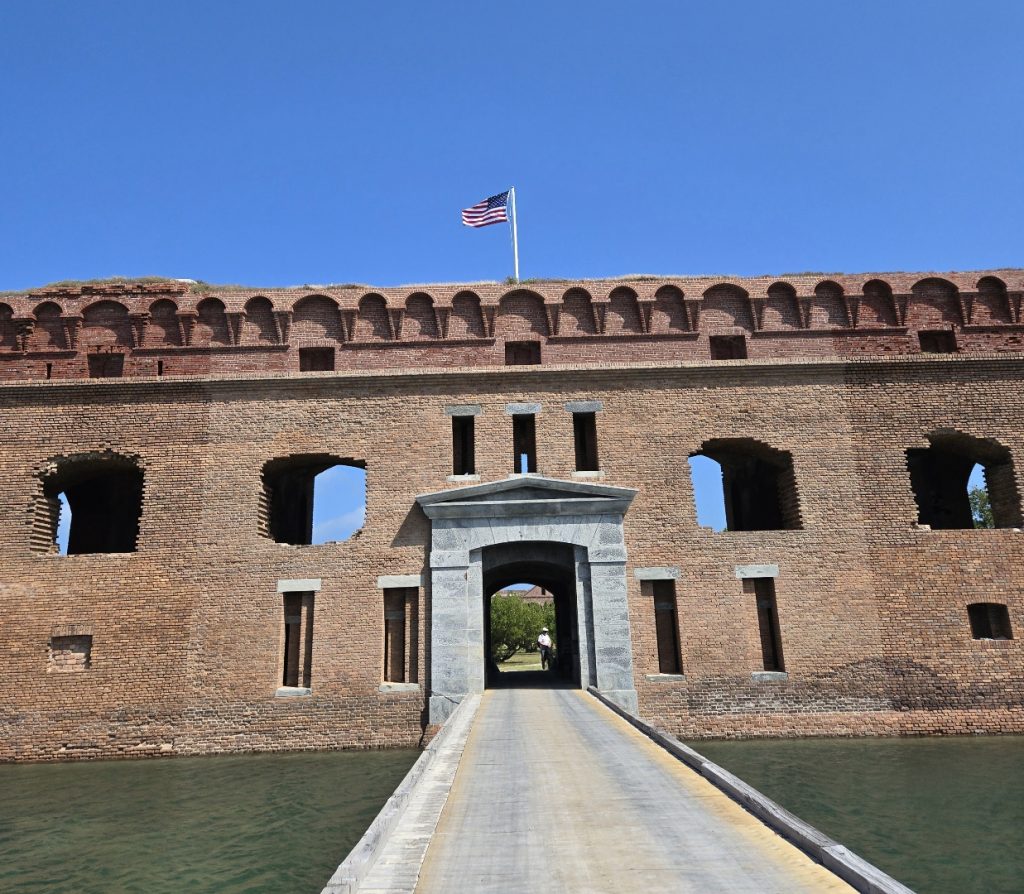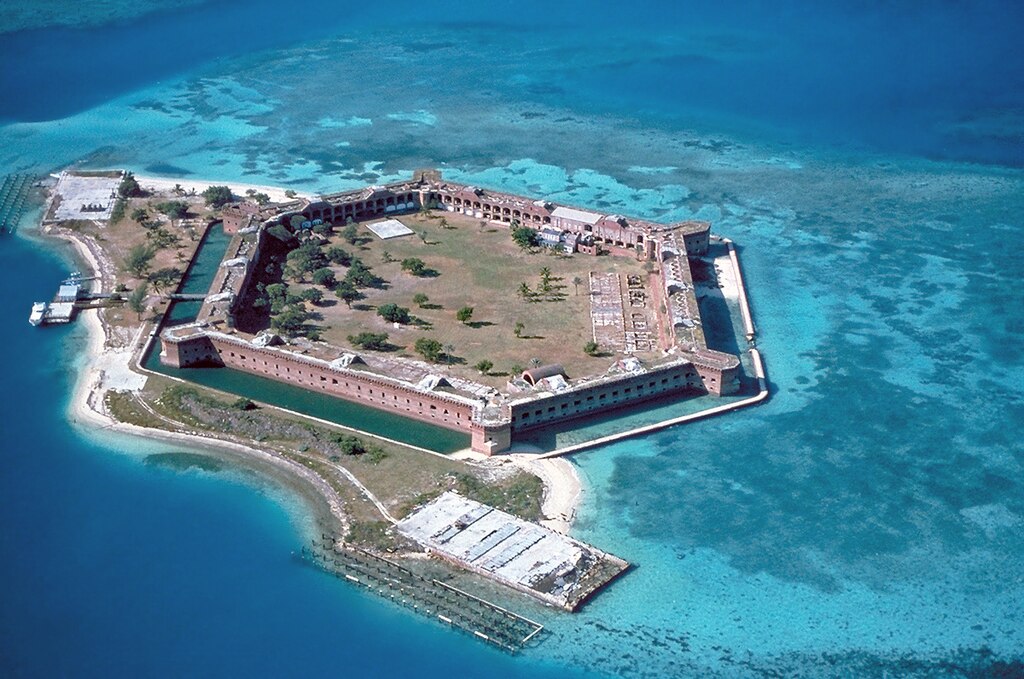Fort Jefferson in Dry Tortugas National Park Served as Both a Coastal Defense Fortification and Military Prison
About seventy miles west of Key West, Florida, are seven islands consisting of sand, coral, and little else. Named the Tortugas by Spanish Explorer Ponce de Leon due to the many sea turtles in the area, the term “dry” was later added to warn mariners that there was no source of fresh water on the islands except for rain water. The Tortugas were strategically located along shipping routes between the Mississippi River and the Atlantic Ocean, and offered a harbor for warships. An enemy that occupied the Tortugas and its harbor could attack shipping or use the location as a base to attack the southeast U.S. coast. Pirates could also use the location to attack merchant ships.
Knowing the importance of these small islands, the U.S. began building a building a fort on the island of Garden Key in December 1846. The U.S. built many coastal defense forts in the 1800s, but this one was a very large one, encompassing 16 acres, and using 16 million bricks. All construction materials had to be brought in by ship. Much of the labor was done by slaves hired from Florida slave owners, though some white contractors and immigrants were also used.
The fort was still under construction when the Civil War began. The original plan called for three levels of heavy guns, but guns were mounted only on the first and top level. The second level was converted to other uses including jail cells. Some Union army deserters, mutineers, and criminals were brought to the isolated islands to serve prison their terms. Construction continued throughout the war and beyond, but even though it was only partially complete, it was a formidable giant artillery platform, capable of driving off any attempts to capture it. It also provided protection for Union Navy ships in the anchorage. Fort Jefferson’s armaments were never tested in battle, but were a success as a deterrent to enemy attacks. The fort also operated as a base for ships in the Union naval blockade of the Confederate coast.
Though they saw no fighting while stationed at Fort Jefferson, the infantry and artillery units still served at a difficult duty station. Tropical heat, insects, and diseases plagued the island. The navy supplied the fort with two steam distillers to turn sea water into drinking water, but fuel had to be shipped in for those. As a result, water was always in short supply and rationed. Food often went bad in the heat and insect infestations. Tropical storms and hurricanes were always a threat.
Following the assassination of Abraham Lincoln, four of the convicted conspirators were sent to the military prison at Fort Jefferson. They included Dr. Samuel Mudd, who had set
John Wilkes Booth’s broken leg. Mudd was sentenced to life in prison. In the fall of 1867, Fort Jefferson was hit by an outbreak of Yellow Fever, which killed, among others, the fort’s doctor and the rest of the medical staff. Mudd took over as doctor, and treated the sick until additional medical help arrived from Florida. His actions saved lives, and the soldiers petitioned President Andrew Johnson for Mudd to be pardoned. Johnson pardoned Mudd in February 1869, and he was released a month later.
By 1874, rifled cannon capable of punching holes in masonry and brick fort walls had made those forts obsolete, and the army abandoned Fort Jefferson. Construction on the fort had never reached completion. It was used by the U.S. Navy as a refueling station for some years after that, and even had a very limited role during both World Wars.
By that time, interest in the Tortugas had shifted to marine and bird ecology. President Franklin Roosevelt designated Fort Jefferson National Monument in 1935. Over the years, the monument was expanded and redesignated as Dry Tortugas National Park in 1992.
Visiting Fort Jefferson and Dry Tortugas National Park
Access to Dry Tortugas National Park is by boat or seaplane. The National Park Service has an authorized concessionaire that operates a ferry between Key West and Fort Jefferson. It’s about a 2 ½ hour trip to and from Key West, and the ferry makes a 4 ½ hour stop at the island. Private and chartered boats and seaplanes also make the trip. Some parts of the fort are closed to visitors as crumbling masonry poses a safety risk (preservation and restoration efforts are ongoing). There are no accommodations at Fort Jefferson, but some limited primitive camping is available on Garden Key outside the fort. Everything including water must be brought in. The islands themselves make up a very small part of the National Park, which is 64,700 acres of mostly water. Snorkeling and scuba diving to observe coral reefs and marine life including sea turtles, as well as bird watching are popular activities in the park. Islands may be closed during bird breeding seasons. For more information, see the Dry Tortugas National Park Website.
Amazon affiliate links: We may earn a small commission from purchases made from Amazon.com links at no cost to our visitors. For more info, please read our affiliate disclosure.








